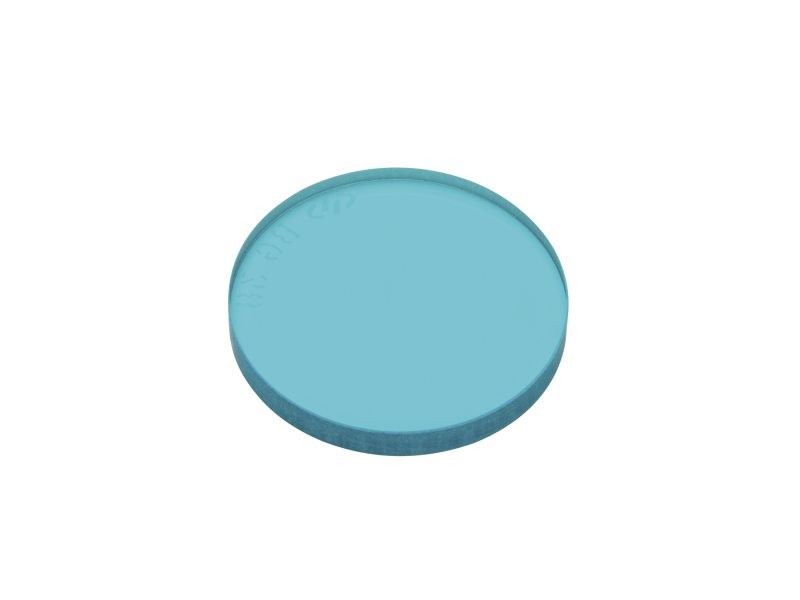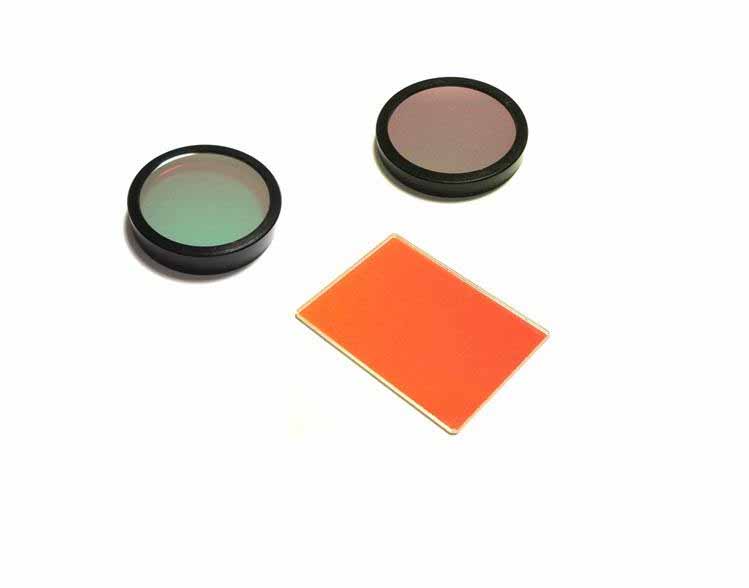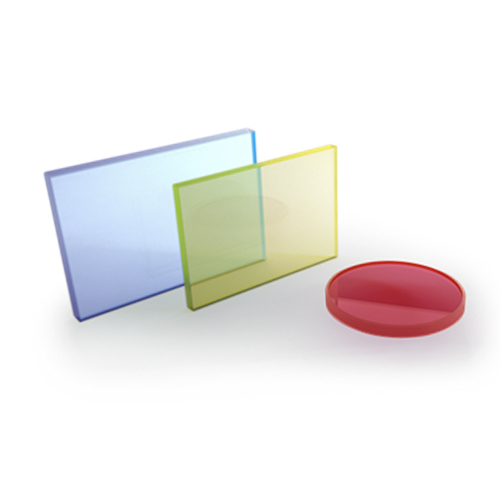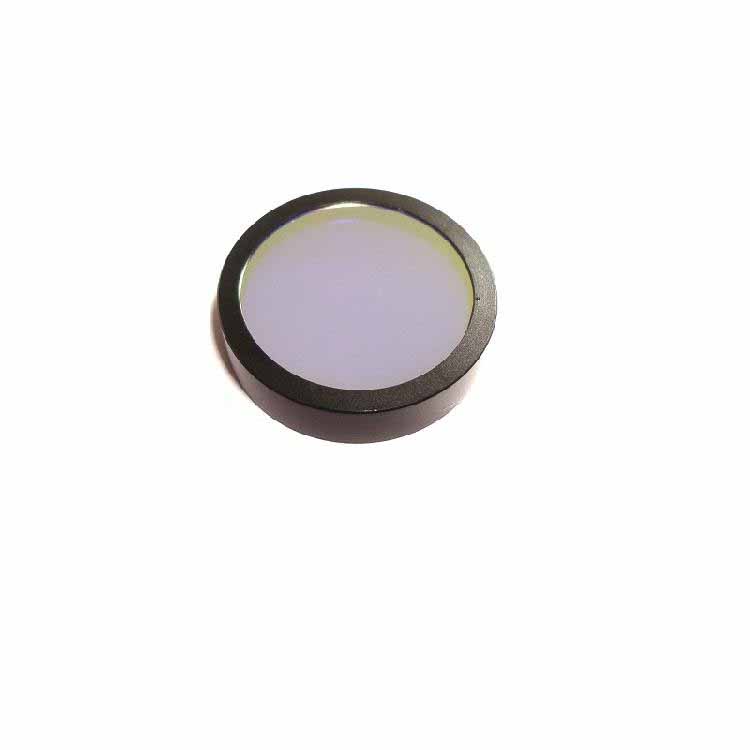PCR Fluorescence Detection Filter Grade A
Name: PCR Fluorescence Detection Filter Grade A
Substrate material: Optical Glass
Smoothness: 80-50 MIL-C-48497A
Clear aperture: >90%
Edge chamfer: <0.2mm
Operating temperature: -40°C /+180°C (low stress state)
Storage environment: Constant temperature ~23°C; Constant humidity <40%
PCR Fluorescence Detection Filter - Grade A (domestication of imported filters - replacing imports)
PCR fluorescence measurement and analysis filter
Fluorescence immunoassay filter
Fluorescent dye probe filter
PCR fluorescence analyzer filter
PCR fluorescence detection filter
Fluorescence filter
Fluorescence PCR analyzer filter
Fluorescent dye probe filter
Special fluorescence filter for real-time fluorescence quantitative PCR instrument
PCR instrument fluorescence filter
Special optical filter for fluorescence PCR detector
New coronavirus detection filter
Replaces American PCR fluorescence detection filter
Product Features:
Basically consistent with the corresponding foreign filter parameters
Dense film layer; long life; no mold and not easy to oxidize and remove film
No wavelength drift due to temperature changes
Cross position cut Stop>OD6
High transmittance>93%
Wide cutoff 200-1050nm
Application:
fluorescence PCR detection, biochip, flow cytometer, etc.
Eight Types of Excitation and Emission:
BP480-35-PCR-A; BP534-22-PCR-A; BP586-22-PCR-A; BP623-30-PCR-A
BP535-45-PCR-A; BP574-30-PCR-A; BP628-32-PCR-A; BP692-40-PCR-A
Four Types of Dichroic Mirrors:
FLU-TL515-PCR; FLU-TL560-PCR; FLU-TL614-PCR; FLU-TL671-PCR
Product Parameter Information:
Excitation and Emission Filters
Model BP480-35-PCR-A Name: PCR filter (Grade A) Central wavelength: 480nm Bandwidth: 35nm Transmittance:>93% Cut-off depth:>OD6@200-830nm Cut-off depth:>OD4@831-1050nm Regular size: D12.5X2mm; D15X2mm; D25X3.5mm, etc. Base material: fused quartz | Model BP535-45-PCR-A Name: PCR filter (Grade A) Center wavelength: 535nm Bandwidth: 45nm Transmittance: >93% Cut-off depth: >OD6@200-830nm Cut-off depth: >OD4@831-1050nm Regular size: D12.5X2mm; D15X2mm; D25X3.5mm, etc. Substrate material: fused silica |
Model BP534-22-PCR-A Name: PCR filter (Grade A) Center wavelength: 534nm Bandwidth: 22nm Transmittance: >93% Cut-off depth: >OD6@200-830nm Cut-off depth: >OD4@831-1050nm Regular size: D12.5X2mm; D15X2mm; D25X3.5mm, etc. Substrate material: fused quart | Model BP574-30-PCR-A Name: PCR filter (Grade A) Center wavelength: 574nm Bandwidth: 30nm Transmittance: >93% Cut-off depth: >OD6@200-830nm Cut-off depth: >OD4@831-1050nm Regular size: D12.5X2mm; D15X2mm; D25X3.5mm, etc. Substrate material: fused silica |
Model BP586-22-PCR-A Name: PCR filter (Grade A) Center wavelength: 586nm Bandwidth: 22nm Transmittance: >93% Cut-off depth: >OD6@200-830nm Cut-off depth: >OD4@831-1050nm Regular size: D12.5X2mm; D15X2mm; D25X3.5mm, etc. Base material: fused quartz | Model BP628-32-PCR-A Name: PCR filter (Grade A) Center wavelength: 628nm Bandwidth: 32nm Transmittance: >93% Cut-off depth: >OD6@200-830nm Cut-off depth: >OD4@831-1050nm Regular size: D12.5X2mm; D15X2mm; D25X3.5mm, etc. Substrate material: Fused quartz |
Model BP623-30-PCR-A Name: PCR filter (Grade A) Center wavelength: 623nm Bandwidth: 30nm Transmittance: >93% Cut-off depth: >OD6@200-830nm Cut-off depth: >OD4@831-1050nm Regular size: D12.5X2mm; D15X2mm; D25X3.5mm, etc. Substrate material: Fused quartz | Model BP692-40-PCR-A Name: PCR filter (Grade A) Center wavelength: 692nm Bandwidth: 40nm Transmittance: >93% Cut-off depth: >OD6@200-830nm Cut-off depth: >OD4@831-1050nm Regular size: D12.5X2mm; D15X2mm; D25X3.5mm, etc. Substrate material: fused silica |
Dichroic Filters
Model: FLU-TL515-PCR Name: Dichroic Mirror Size: 17.6x12.5x1.05mm, etc. Substrate Material: Fused Silica Incident Angle: 45° Reflection Band: 440-495nm Reflectivity > 98% Transmission Band: 515-730nm Transmission: > 90 | Model: FLU-TL614-PCR Name: Dichroic Mirror Size: 17.6x12.5x1.05mm, etc. Substrate Material: Fused Silica Incident Angle: 45° Reflection Band: 350-594nm Reflectivity > 98% Transmission Band: 614-950nm Transmission: > 90% |
Model: FLU-TL560-PCR Name: Dichroic Mirror Size: 17.6x12.5x1.05mm, etc. Substrate Material: Fused Silica Incident Angle: 45° Reflection Band: 350-540nm Reflectivity > 98% Transmission Band: 560-850nm Transmission: > 90% | Model: FLU-TL671-PCR Name: Dichroic Mirror Size: 17.6x12.5x1.05mm, etc. Substrate Material: Fused Silica Incident Angle: 45° Reflection Band: 580-651nm Reflectivity > 98% Transmission Band: 671-800nm Transmission: > 90% |
Knowledge extension:
PCR amplification instrument, also known as PCR gene amplification instrument, PCR nucleic acid amplification instrument, polymerase chain reaction nucleic acid amplification instrument, is an instrument that uses PCR (Polymerase chain reaction) technology to amplify specific DNA. It is widely used in medical and biological laboratories, such as to determine whether a certain genetic disease spectrum will be shown in the specimen, diagnosis of infectious diseases, gene replication and paternity testing.
Principle of Nucleic Acid Detection of New Coronavirus
All organisms except prions contain nucleic acids, which include deoxyribonucleic acid (DNA) and ribonucleic acid (RNA). The new coronavirus is a virus that only contains RNA. The specific RNA sequence in the virus is a marker that distinguishes the virus from other pathogens. After the emergence of the new coronavirus, Chinese scientists completed the analysis of the whole genome sequence of the new coronavirus in a very short time, and discovered the specific nucleic acid sequence in the new coronavirus by comparing it with the genome sequence of other species. During clinical laboratory testing, if the specific nucleic acid sequence of the new coronavirus can be detected in the patient's sample, it should indicate that the patient may be infected with the new coronavirus.
The most common method for detecting the specific sequence of the new coronavirus is fluorescent quantitative PCR (polymerase chain reaction). Because the PCR reaction template is only DNA, the novel coronavirus nucleic acid (RNA) should be reverse transcribed into DNA before the PCR reaction. In the PCR reaction system, a pair of specific primers and a Taqman probe are included. The probe is a specific oligonucleotide sequence with a reporter fluorescent group and a quencher fluorescent group labeled at both ends. When the probe is intact, the fluorescent signal emitted by the reporter group is absorbed by the quencher group; if the target sequence exists in the reaction system, the probe binds to the template during the PCR reaction, and the DNA polymerase uses the exonuclease activity of the enzyme to enzymatically degrade the probe along the template, and the reporter group separates from the quencher group and emits fluorescence. For each amplified DNA chain, a fluorescent molecule is generated. The fluorescence quantitative PCR instrument can monitor the number of cycles (Ct value) at which the fluorescence reaches the preset threshold value, which is related to the concentration of viral nucleic acid. The higher the concentration of viral nucleic acid, the smaller the Ct value. Products of different manufacturers will determine the positive judgment value of this product based on the performance of their own products. For the nucleic acid detection of the novel coronavirus, first collect samples according to the [Sample Requirements] section of the kit instructions. Conventional sample types include throat swabs, nasal swabs, sputum, bronchial lavage fluid, alveolar lavage fluid, etc. Since the new coronavirus is an RNA virus and RNA is easily degraded, RNAse-free swabs and RNAse-free storage tubes are used when collecting samples. After obtaining patient samples, they need to be tested as soon as possible. If the samples that need to be transported cannot be tested immediately, they should be packaged at low temperatures according to the requirements of the instructions and sent to a special testing agency for testing. After receiving the samples, the testing agency extracts nucleic acid from the samples. The nucleic acid extraction reagent should use the nucleic acid extraction kit specified in the approved product instructions.
Viral RNA needs to be reverse transcribed into cDNA first, and then amplified and tested. PCR amplification and testing should use the fluorescent quantitative PCR instrument specified in the approved product instructions. The size of the sample Ct value obtained by fluorescent quantitative PCR can be used to determine whether the patient sample contains the new coronavirus.
If you are interested in this product and want to know more detailed product information, please fill in the following form to contact the manufacturer directly:
INQUIRY
CATEGORIES
LATEST NEWS
CONTACT US
Contact: Jessie
Phone: +86 13772020541
E-mail: info@borisun.com; jessie@borisun.com
Whatsapp:+86 13772020541
Add: First floor, dalanyingthermal insulation material factory, Shima Road, Hantai District, Hanzhong City, Shaanxi Province, China 723000





